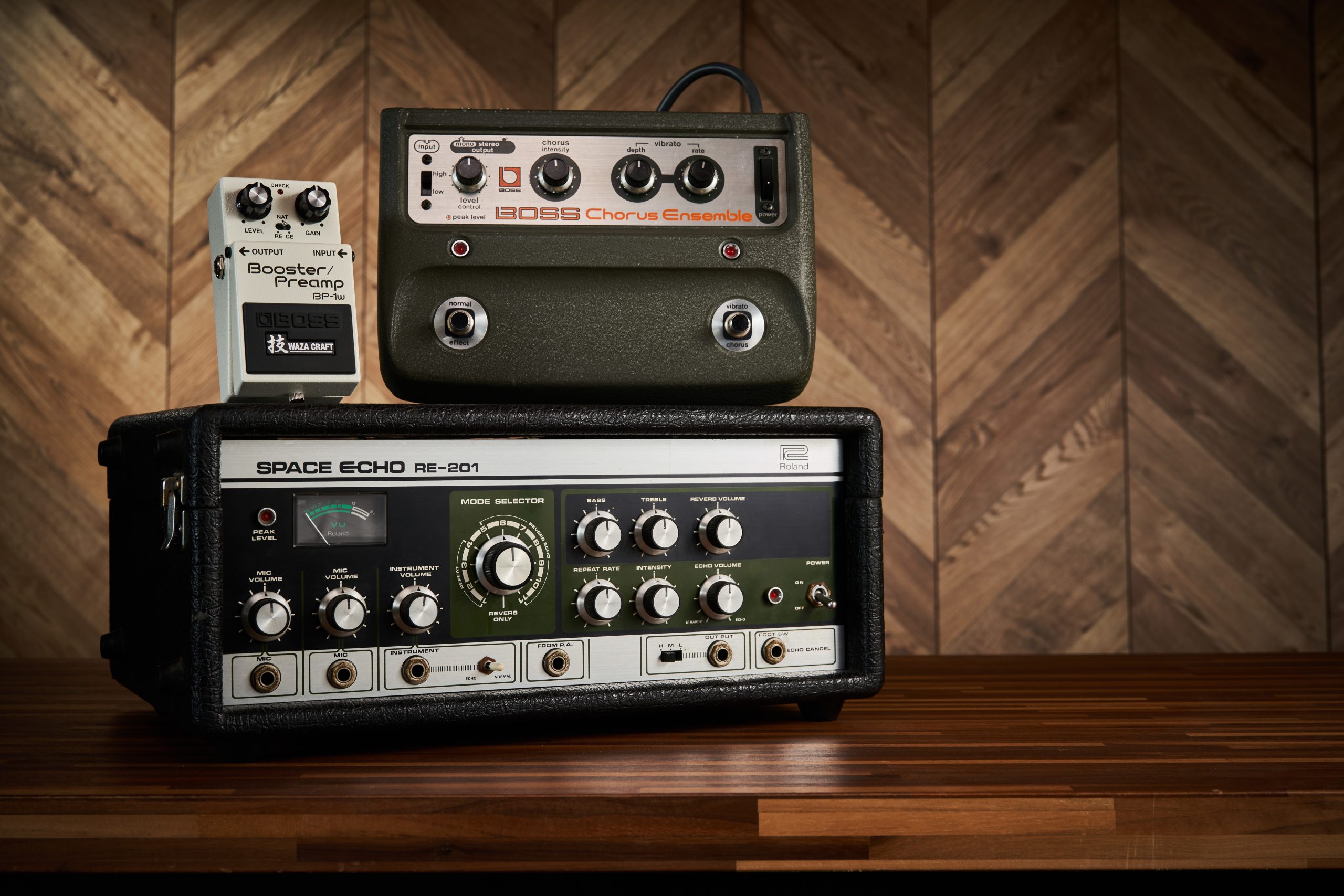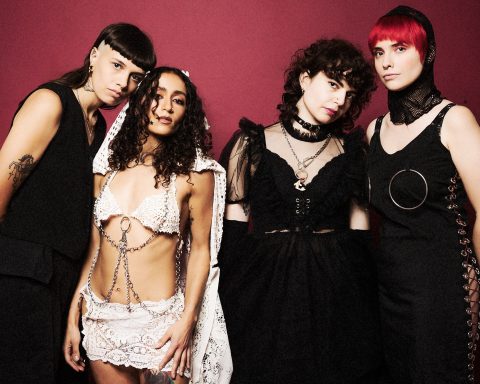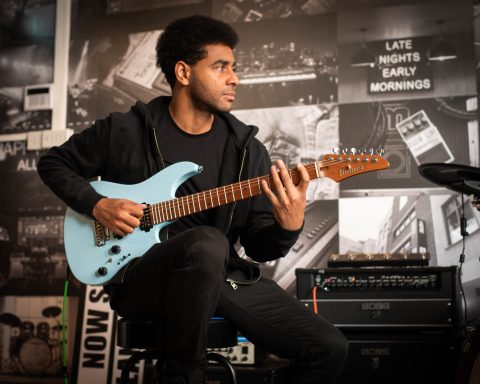For decades, music makers in the know have been plugging into the hidden power of the CE-1 and RE-201 for their analog preamp circuits. Now, for the first time, these classic sounds are available in tandem with a clean, powerful booster in the form of the BP-1W Booster/Preamp—2023’s addition to the esteemed Waza Craft range. Explore the rich history of these revered preamps.
A Colorful Pre-History
BOSS has a long and colorful history when it comes to preamps. In fact, the very first BOSS-branded product arrived in 1974 in the form of the B-100 Preamplifier, which was only available in the US market. Intended for acoustic guitar, this rarity featured Volume, Treble, and Bass controls. Developed in the early ’80s, the FA-1 FET Amplifier sported the same array of knobs along with a low-cut switch. Rory Gallagher, David Gilmour, and The Edge famously used the unit.
With the ability to adjust gain and EQ, such units served as powerful tone-shaping tools. In front of an amp or effect, a quality preamp can significantly enhance the guitar tone, imparting the signal with a unique sonic flavor. And while not all preamps are created equal, some of the greatest-sounding ones reside in some of the least obvious places.

Preamps may not be the first thing to mind when discussing chorus, delay, and reverb. However, you’ll find two of the guitar world’s best in the BOSS CE-1 Chorus Ensemble and Roland RE-201 Space Echo. Guitarists covet these collectible devices and not only for their enduring spatial effects. Indeed, guitarists, engineers, and producers consider the onboard preamps secret weapons.
"Guitarists covet these collectible devices and not only for their enduring spatial effects. They consider the onboard preamps secret weapons."
BOSS CE-1 Chorus Ensemble
When Roland released its game-changing JC-120 Jazz Chorus in 1975, guitar players looking for fresh sounds embraced the amp. Aimed at pro players, the solid-state JC-120 presented an exciting alternative to the usual fare. It also featured a stereo Chorus/Vibrato section. This groundbreaking modulation design transmuted into stompbox form the following year. The BOSS CE-1 Chorus Ensemble featured all-new analog BBD circuitry. It was BOSS’s debut effects pedal and the world’s first-ever chorus pedal—a design that has proven hard to beat since it appeared in 1976.
Although the CE-1’s central appeal was its chorus and vibrato, guitarists began to appreciate the distinctive sound of its preamp. Fitted with a High/Low Input sensitivity switch and Level Control knob, the CE-1 worked for various sound sources. These included microphones, keyboards, and electric guitars (as illustrated in the manual).
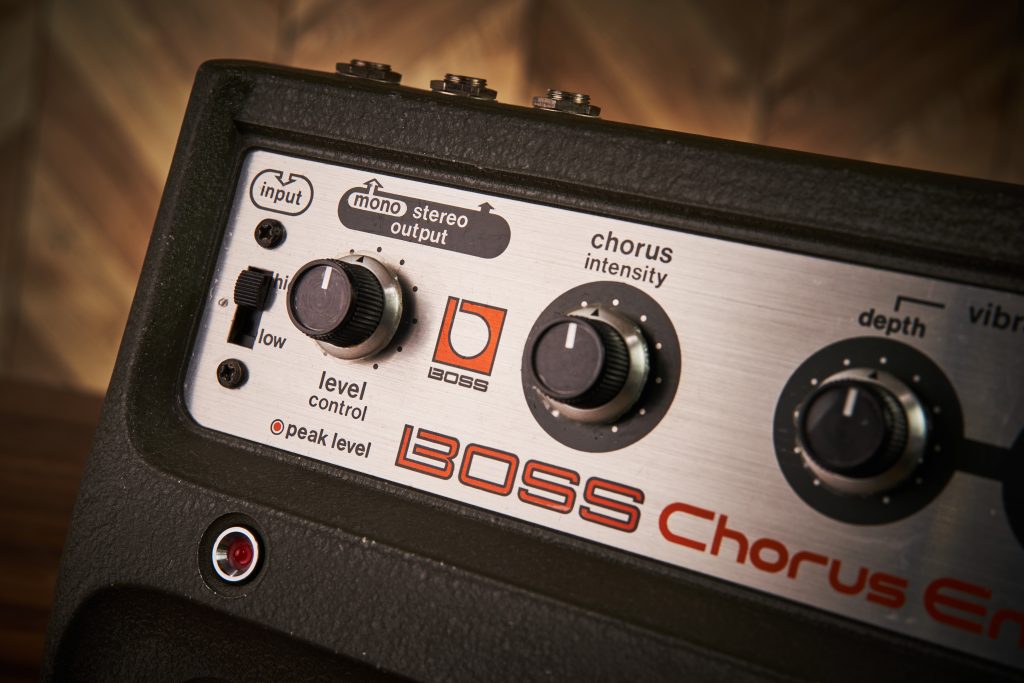
A Chorus of Approval
With Low Input sensitivity selected, the signal went directly from the input jack to the Level Control pot before hitting an op-amp, producing significant gain. From there, the signal went through a low-pass filter before reaching the BBD. The High Input sensitivity mode (labeled “mic amp” on schematics) engaged an additional single-transistor boost circuit between the input jack and the Level Control pot. This could yield some tasty-sounding asymmetrical clipping.
It’s worth noting that without a buffer, high-impedance electric guitar signals will experience treble loss. This may be helpful in certain situations. However, the CE-1’s standard 50K ohm Level Control pot is generally better suited to hotter, low-impedance signals.
"In 1977, following the CE-1's arrival, BOSS unveiled its compact pedal design. The two-knob CE-2 Chorus joined the range in 1979."
In 1977, following the CE-1’s arrival, BOSS unveiled its compact pedal design. Thus, the two-knob CE-2 Chorus joined the range in 1979. In 1982, the three-knob CE-3 Chorus arrived. Testament to its appeal, the CE-1 Chorus Ensemble remained available concurrently until 1984. In the ensuing years, guitarists like John Frusciante and Joe Bonamassa utilized the pedal. These compact pedals are worthy of praise for their iconic modulation sounds. Still, the only way to achieve authentic BOSS CE-1 preamp tones was via an original vintage pedal. Until now.

Enter the Echo
In 1973, the RE-100 (tape delay) and RE-200 (tape delay and spring reverb) Space Echo units hit the market. The RE-101 and RE-201, respectively, appeared to supersede the earlier version. Further Space Echo models appeared in the ’70s and ’80s, including the RE-301, RE-501, and SRE-555 Chorus Echo, and RE-3 and RE-5 Digital Space Echo units. Still, the popular RE-201 remained available throughout until the ’90s.
With its three-head tape delay and triple-spring reverb magic, the Roland RE-201 Space Echo proved reliable and easy to use. Plus, its extensive array of controls gave music makers unbridled creative freedom. The RE-201 became an indispensable tool for artists across myriad styles, including Lee “Scratch” Perry, Portishead, and Radiohead. Demand for these vintage units continues today.
"With its three-head tape delay and triple-spring reverb magic, the Roland RE-201 Space Echo proved reliable and easy to use."
Velvety Saturation
Boasting expansive connectivity, the RE-201 had three inputs adjacent to a VU meter—two labeled Mic and the other Instrument—with independent Volume knobs. This three-channel layout allows simultaneous input from three sources. By overloading this classic ’70s transistor preamp, guitarists discovered a velvety saturated sound. It embellished their tone with harmonic complexity and natural compression.
Contemporary players can dial in fat RE-201 preamp distortion using the Saturation control of the BOSS RE-202 Space Echo. Still, the WAZA CRAFT BP-1W Booster/Preamp represents the first time this unique sound is available in a compact pedal. Characterized by round, mellow mids and smooth, articulate highs, the BP-1W’s RE mode fattens up single coils and complements humbuckers with fullness and presence.
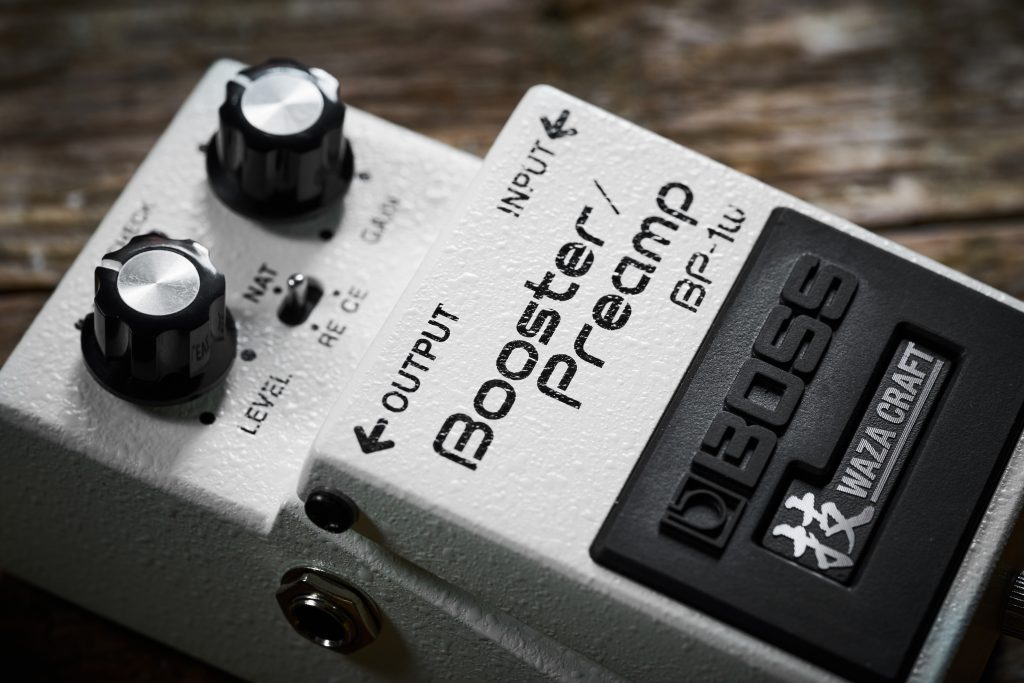
Time-Honored Tone with the BP-1W
These time-honored preamp sounds are now available to place wherever you choose in your signal chain. Select the BP-1W Booster/Preamp’s CE or RE modes and bring the voices of the CE-1 Chorus Ensemble and RE-201 Space Echo preamps to your pedalboard. And with wide-ranging level and gain controls, dialing in the perfect tone has never been easier.
"Select the BP-1W Booster/Preamp's CE or RE modes and bring the voices of the CE-1 Chorus Ensemble and RE-201 Space Echo preamps to your pedalboard."
In addition to its CE-1 and RE-201 preamp sounds, the BP-1W boasts a clean, robust booster circuit. NAT (Natural) mode produces a punchy, natural voice with minimal coloration. This mode is ideal for signal strengthening, adding transparent presence to leads, and driving an input organically. Furthermore, users can choose two input buffer modes: STD (Standard) and VTG (Vintage). The Standard input buffer maintains sonic range and character, while the Vintage input buffer provides warmth and smooth dynamic response.

